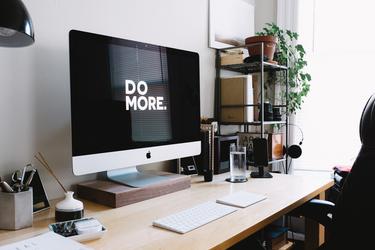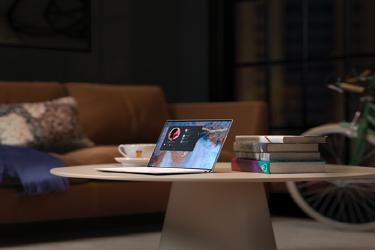
The time was 2 AM, it was dark outside, but my room was light with some lights from the computer. I’ve been here for around 12 hours at this point, keyboarding away for the launch of a new game. I was enjoying it with friends as we started together. Little did I know it would be pretty much the last time I would be able to do that. When I woke the next day, one of my shoulders was in massive pain. I just couldn’t play anymore without pain, and I had to cancel all my plans. I found out that the problem wasn’t necessarily the game or the length of time. The real problem was the way I was sitting at the desk. My chair was a tiny bit too low for the table, and so my shoulders were in a constant weird position. That position was also worst on one side because of how I would type or use the mouse on the desk. That couple millimeter difference was all it took, combined with long hours of gaming, to cause damages. That’s why ergonomics is essential and not just a buzzword. No matter how much time you spend at your desk, if you are not cautious, you will most likely end up hurt. It might take more time than it did for me unless you spend 12 hours at your desk, but it’s still real. Since that accident, I’ve been trying to be more mindful of my body and my position. Which it turns out is not as hard as you would expect it to be.
Sitting Desk
This part is what might apply to most of you. Simply because most people like more to work sitting or don’t have standing setup. So, what does it take to be more ergonomic while sitting:
Chair adjustment
- Your feet should touch the ground, in full, otherwise use a footrest.
- Adjust your chair in height until the elbows are bent to 90 degrees.
- Adjust your chair, so your knees are also at 90 degrees.
- Adjust your chair back, so your torso is at 90-100 degrees angle with your tights.
Keyboard
- The keyboard should be where your hands end up when you sit.
- The mouse should be as close as possible to the keyboard. You want to prevent movements when you reach for the mouse
As you can see, there is not that much to it. There are still some more points below that are grouped since they apply to both ways of working. Also worth noting, most chairs and desk can accommodate this setup already or with simple tweaks. You can also use things you have laying around to help. For example: use an old book to prop up the monitor; a box of paper can be a foot stand; a cushion could help with back positioning — no need for special tools most of the time.
Standing Desk
Standing desks are now pretty popular thanks to their reputation for being better for your health. That fact is now being somewhat contested, but mainly since standing desks also have their ergonomics. You cannot just switch to standing, and everything will be better, they also have their own rules. Standing at a desk for 8 hours without moving is not better than sitting at a desk turns out.
Desk (includes keyboard)
- The keyboard should be around the hips level.
- Your wrist should be at 180 degrees on the keyboard top.
- The keyboard top should be around or slightly lower than the elbows.
- Your position should be so your shoulders are slightly rounded back, not forward.
- Your head should be set so that your shoulder line with your ears if someone was looking at you from the side.
Standing desks have a bit less positioning to do, mainly because they rely a lot more on your body. The thing to remember is that those adjustments are not less necessary. That positioning is what will helps your body stay in a more natural pose, which is what ultimately will help.
Common
This section is about overlapping settings between sitting and standing. Since either position will include monitors and movements, I grouped them below.
Monitor
- Monitors need to be arm’s length from where you’re sitting.
- Just extend your arm and try to touch it with your palm.
- Monitors need to be set up, so the top of the screen is at eye level.
- If you have two monitors, one main one and one for reference, you want the main one straight in front and the other at an angle.
- If you have two monitors and you use them equally. Put them at an angle, so you’re in the middle of them. Create a “triangle” with you acting as the base and the monitors as both sides.
- If you use three monitors, create a “trapezoid” with the monitors. You want the main monitor in front of you, the two other monitors on each side and you as the base.
Movements
Another essential point of ergonomics is to get up and walk every hour. Getting up, I find, is one of the hardest tips to do. There are many reasons for the difficulty: time constraint, laziness, flow state, not knowing, etc. Those are usually the reasons people (myself included) don’t stand up more. But whether your standing or sitting at your desk, moving is the key part of a good setup.
Here are some of the tricks I found helped me:
- Get a smaller coffee/water, so you have to get up to refill it more often.
- Switch from standing to sitting or the other way around every so often during the day. It will force you to move in either case.
- Walk to a colleague to ask a question in person instead of via email or chat.
Those might seems like “lost time,” but 2-5 minutes per hour shouldn’t matter, except for your body. Before moving on, there’s one little caveat about the idea of going to a coworker. Please be mindful of their work dynamic and schedule. You do not want to go and interrupt their flow state for a small question that could wait; just be aware.
Other tools
There is a lot of various tools that can also help your body to be a more natural state. The main problems are, they’re often pricey and will require research to know if they work for you. If you still want to go that route here’s a small list just to get you going:
- Sideways mouse: they are made to be used without your wrist or your arm being twisted in an unnatural angle.
- Trackball: One I use with my standing desk. One of the main advantages is that it doesn’t require arm movements to move your cursor. Since my standing desk is a bit smaller, using one allows me to put the keyboard in the right spot and still use a mouse correctly.
- Ergonomics Keyboard: Those are often split in the middle in some fashion to help your arm stay in a more natural angle. The main drawbacks are their price, and they will usually require an adaptation period.
- Standing desk mats: A small mats in “squishy” material to help relieve the pressure on your feet from standing for an extended period. Some may also include various angled sections to make your feet move.
- Exercise ball chair: Even had one of those big bouncy balls as a child and wish you could use it as your chair? Now you can. It’s pretty much what they are, but they do help you move around while you work as it’s a ball.
Final thoughts
One important thing to remember no matter what, those shouldn’t hurt. The idea of all of those is not to hurt yourself, and they shouldn’t. If you feel pain or have trouble, just stop and seek professional help first. I’m not an ergonomics professional, and I don’t know your body as you do. Listen to your body first and foremost, then if a professional tells you that some pain is OK in your case, go for it. If you experiment with those over some time, you should be able to find what you like and how your body reacts. Just remember, you probably won’t go from sitting to standing in a day or maybe not even a week, take your time. Your body is worth the trouble, experimentation and time after all.


